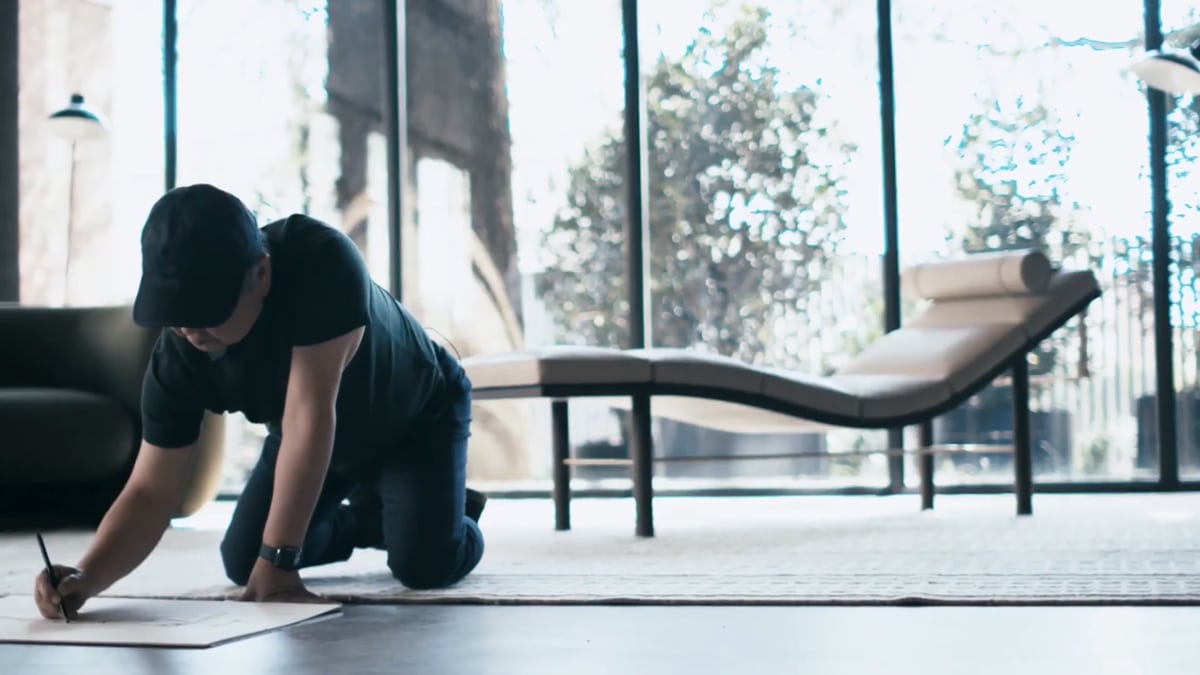Discover the remarkable world of Naoto Fukasawa, a renowned designer who has seamlessly crafted a diverse range of everyday objects, from watches and CD players to eyewear, chairs, and even his own L-shaped house and studio.
With an illustrious career spanning international brands, Naoto Fukasawa‘s creative journey also encompasses roles as an esteemed educator, curator, advisor, and more. At the heart of his design philosophy lies the belief that true success is achieved when design becomes so effortlessly user-friendly that its presence goes unnoticed. Fukasawa achieves this remarkable feat by meticulously attending to the smallest of details, possessing an innate understanding of the intricate relationship between objects, individuals, and spaces. Presently, his keen focus is dedicated to the design of two exceptional pieces for Molteni&C: the Tuscany chaise longue and the Cinnamon armchair, both reflecting his signature finesse and elegance. Immerse yourself in the captivating world of Naoto Fukasawa and his unrivaled expertise in the art of nuanced design.
Naoto Fukasawa embarked on his professional journey as an industrial designer, immersing himself in the study of forms and shapes that encompassed a wide range of objects, from furniture to electronic devices. His early career took him to a watch company, a pivotal time when the industry was undergoing a transformation, incorporating IT and micro-technology into their designs. This fortuitous circumstance allowed Fukasawa to explore the realm of designing for new technologies, delving into LCD watches, digital watches, micro-printers, and small projectors.
As his career progressed, Fukasawa assumed various roles around the world and engaged in conversations with fellow designers about the challenges of designing mass-produced electronic objects whose form wasn’t inherently dictated by their function. These discussions prompted him to question the essence of true design and contemplate whether these objects could be treated as sculptural pieces. This period of introspection and exploration led Fukasawa to cultivate his expertise in form and shape, earning him the moniker “Detail King” for his ability to craft virtually anything. He garnered numerous accolades for his innovative technological creations, marking the first phase of his illustrious career.
Returning to Japan after his stint in California, Fukasawa’s perception of design expanded as he became increasingly aware of European design influences. Surprisingly, his foray into the furniture industry began to gain momentum, even though his primary focus had been on generating unique proposals for electronics. Italian companies, in particular, saw him as an intriguing designer capable of bridging the worlds of high-tech and furniture.
When Molteni&C approached Fukasawa, he conducted a thorough examination of their rich history. The company collaborated with esteemed designers and architects and held archives of renowned figures like Gio Ponti. Carlo Molteni, the company’s president, remained actively involved in product development, and Fukasawa appreciated the close-knit, family-oriented nature of the business, rooted in craftsmanship.
The chaise longue, a furniture piece not abundant in iconic status compared to its counterparts designed by Eames or Le Corbusier, became a focal point for Fukasawa’s collaboration with Molteni&C. The company’s historical preference for dark wood and minimal use of metal provided a starting point for his creative process. Furthermore, the chaise longue’s form was inherently dictated by the human body, leaving Fukasawa to seek inspiration from its intended environment. He envisioned its placement by a beach or poolside, nestled against a mountainside, or overlooking the picturesque rolling hills of Tuscany. Fukasawa recognized that the object’s identity was inseparable from its surroundings, emphasizing the interdependence between our lived environments and the objects that inhabit them.
The armchair presented in this context embodies a substantial presence, composed of polyurethane that imparts a resemblance to a voluminous stuffed bear. Analogously, an armchair can be likened to a plump canine companion or an endearing elephant, evoking sentiments of friendship and constant companionship. Its allure lies in its distinctive character and soul, elements that hold immense significance.
According to Naoto Fukasawa, design serves as a harmonizing force, forging connections between individuals, their surroundings, and the objects they interact with. When a design is executed flawlessly, its impact often goes unnoticed, seamlessly integrated into users’ experiences on a subconscious level. However, the discomfort caused by an ill-designed object becomes conspicuous, garnering attention and concern. Often dismissed as a minor inconvenience, this discomfort should not be disregarded, as rectifying it has the power to greatly enhance the world we inhabit.
The process of design and mass production frequently leads to the creation of objects that impose a negative toll on the environment yet yield positive economic outcomes. In the past, the prevailing focus was on ceaselessly producing numerous items, particularly those of high quality and elevated cost—an established economic cycle. However, this cycle no longer aligns with the present paradigm. The imperative of sustainability must now be considered as a paramount factor. It is imperative to discard objects with short lifespans, recognizing their inherent inadequacy. While the concept of “recycling” holds merit due to its utilization of broken-down materials, it is Naoto Fukasawa’s conviction that the true essence of sustainability lies in the creation of objects that possess inherent value, discouraging their disposal. By designing an enduring chair that captures the affection and devotion of its users, the notion of sustainability transcends mere longevity. Embracing a mindset of “maintenance” emerges as a more pivotal environmental approach. The significance of instilling belief and love in objects should not be underestimated, as such sentiments contribute to their prolonged existence.










